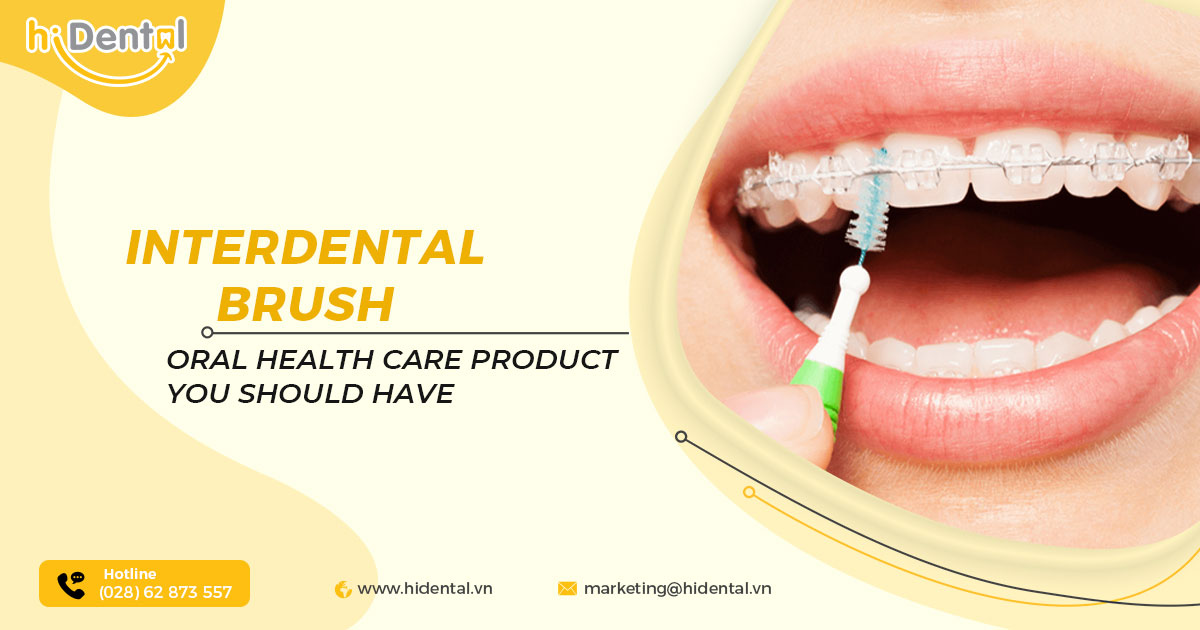Mục lục
Have you ever heard about interdental brush? What is its role in oral hygiene?
Dental plaque may build up between your teeth where a toothbrush does not reach. It is a good idea to use an interdental brush as part of your daily cleaning routine to prevent gum inflammation, cavities and bad breath.
Interdental brushes consist of a central metal wire core, with soft nylon filaments twisted around. The superiority of interdental brushes is higher effectiveness of plaque removal and high patient acceptance, as well as ease of use.
Instruction of interdental brush usage
Below graphics from Australian Dental Association show you how to use interdental brush as your routine oral care.
- Choose the correct size interdental brush. Hold the interdental brush firmly between your thumb and index finger.
- Place in-between the teeth gaps and gently brush in and out a few times between each tooth.
- Rinse the brush under tap water after useand put the cover back on.
If you’re doing for your child’s teeth lean their head back into your lap so you can see into their mouth. Or they can stand in front of you and tip their head back against your chest.
Notes: Never force the interdental brush between the teeth gaps. If you’re unsure, your dentist can advise which size is best for you. Ask your dentist for tailored guidance on oral hygiene techniques & aids to suit your mouth.
Choosing your appropriate interdental brushes
There are several factors to consider when choosing an interdental brush which may affect its efficacy.
The size factor
This is the most important factor affecting the result of removing plaque between teeth. Too small, and the brush may not clean effectively. Too large, and you risk damaging your teeth or gums in the process. Dental professionals will measure the spaces between your teeth and advise you of the interdental brush size(s) you should use to fit snugly in the interdental spaces. Therefore, you may have a number of interdental brushes because of different sized interdental spaces.
If you want to know what size interdental brush to use without visiting a dentist, try purchasing a multipack with a variety of different sizes. Dental experts recommend that you should have 2 – 3 different sized interdental brushes for optimal two dental arches cleaning result. Additionally, you can use large sized brush to clean braces and wires if you are in orthodontic treatment.
The geometry factor
Waist-shaped interdental brush heads are found to remove significantlymore biofilm than straight ones. And straight interdental brushes may be more effective than angled interdental brushes with a long handle. A triangular or conical form of interdental brushes may also provide better adaptation to the interdental spaces.
The material factor
Metal wire in the middle of interdental brushes can be uncomfortable for people with sensitive root surfaces. Rubber interdental brushes/picks are a more recent development and can be a viable alternative to conventional interdental brushes with the same effectiveness.
Comparison between interdental brush and dental floss
Do you wonder if interdental brush or dental floss is better?
Both two of oral health care products have significantly improved the result of cleaning interdental spaces. However, interdental brushes not only have more evidences in plaque control around bridges, braces and implants but are also superior in reducing severe condition of periodontitis patients. Beside that, it is easier to use interdental brush.
Summary
It is clear that the use of interdental brushes as an adjunct oral health care over brushing alone. The most significant thing is the choice of the appropriate interdental brush for optimal plaque control in the interdental spaces. From now on, let’s start your routine oral hygiene with this kind of brush.
References:
- Australian Dental Association: https://www.ada.org.au/
- Ethan Ng, and Lum Peng Lim – An Overview of Different Interdental Cleaning Aids and Their Effectiveness, Dentistry Journal 2019
- Tepe: https://group.tepe.com/
- Curaprox: https://www.curaprox.com






